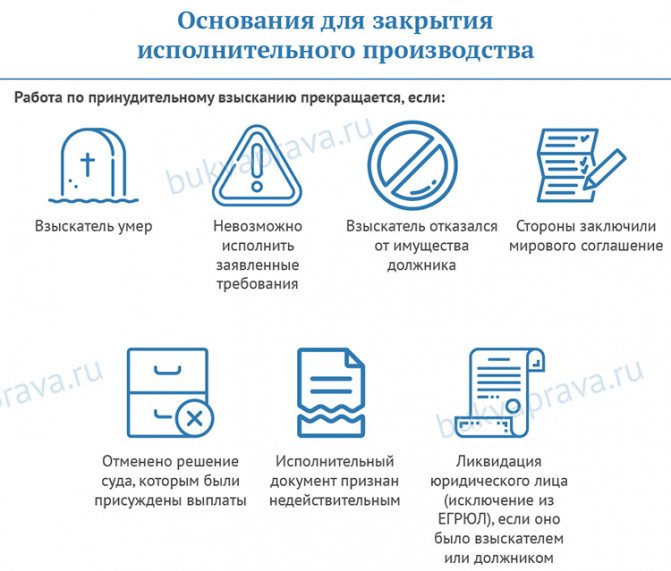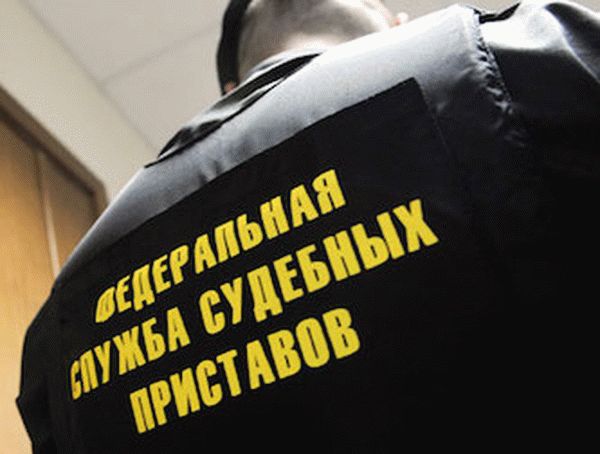A writ of execution is a document issued by a judicial authority after the judge’s decision has entered into force. The initiator of its issuance is usually the plaintiff in the case. In some cases, for example, when collecting funds from the budget, the document is sent directly to the judicial authority for further execution.
A writ of execution is the basis for FSSP employees to initiate enforcement proceedings, within the framework of which debt collection is carried out. Current legislation provides bailiffs with an extensive range of powers, which is constantly expanding. Therefore, there is nothing surprising in the relevance of the question of whether it is possible to challenge a writ of execution before or already during the work of the bailiffs? The answer is contained in the article.
Types of writs of execution
According to the internal content, ILs are differentiated into 2 groups and depend on the type of recovery. Types of deductions based on writs of execution:
- property Contains information about collecting money. This is the most common type of document with a resolution to one person to pay an amount established by the court in favor of a second person, and it makes no difference whether it is an organization or an individual.
- non-property. They decide to take or not to carry out specified actions, for example, to transfer the garage to another person or reinstate a person to their previous job.
List of required documents
Important! In addition to the writ of execution, you also need to fill out an annex to it, which includes the following papers:
- statement. The document, as stated above, must be drawn up in two copies. The text is presented in free form, but the structure of the document must be followed. The header must contain information about the body to which the application is being submitted, about the bailiff unit and the name of its head, as well as information about the applicant. It is also necessary to initiate enforcement proceedings under the IL, indicating its norm and date of issue. One copy of the application is handed over to the assistant or bailiff, the second remains with the plaintiff with a note of acceptance. From this moment the period for initiating proceedings begins to run,
- a copy of the court decision. Confirmation of the presence of the specified act is required,
- power of attorney. This document is necessary in case of participation of a representative making an appeal instead of the plaintiff,
- requisites. When funds need to be collected, the bailiff is immediately provided with the details for calculating the debt.
Documents are transferred in person or by mail, but with a registered letter with notification.
Watch the video. How to send a writ of execution to the bank:
Where to get a writ of execution based on a court decision
The collection document is received by the claimant on the day the resolution enters into force. As a rule, after 10 days after the decision was announced, a writ of execution in a civil case is issued, since during this time the victim can still appeal the decision in court by filing an appeal. In practice, sometimes you have to wait longer before picking up a certified document. The IL is issued in a single copy, but if a decision is made in favor of more than one claimant, then the number of documents is directly proportional to their number.
Collection of funds from the insurance company
In addition to the methods of filing a writ of execution, to a bank or directly to bailiffs, there is an option when the writ is sent directly to the debtor. This method is most often used when a claim was filed against an insurance company.
The main advantage of this option is that the time it takes to receive the debt is significantly reduced. When the writ of execution is handed over to the bailiffs, and they collect funds from the insurance company, it takes about three months, and when the writ is directly transferred to the insurer, it takes no more than two weeks.
Attention! Our qualified lawyers will assist you free of charge and around the clock on any issues. Find out more here.
The main condition for this order is a writ of execution. To receive it, you must wait until the court decision comes into force, and in a civil case this period is one month. After this, a sheet is issued, and only then the person has the opportunity to demand money from the insurance company.
If the person has a writ of execution in his hands, then compensation will be guaranteed. Often, insurance companies refuse to compensate for losses when their client presents only a court decision, even if it has already received legal force. In addition, the sooner the sheet is filed, the faster the losses will be reimbursed.
How to obtain a writ of execution by court decision
There are 2 delivery methods. The writ of execution is issued to the bailiffs. If the debtor does not comply with the assigned order, then the plaintiff has grounds to request that the IL be issued to him. An appeal is drawn up in any form by hand, for which it is necessary to have a court order. In the header indicate the details of the court, the number of the decision and your own (last name, initials, residential address), then state the request. The application is signed and dated.
In addition, you can always request a duplicate if the original was lost for certain reasons. The application is drawn up in a similar way, with the exception that the request for a duplicate and the reasons for the loss of the original are indicated. It is necessary to attach proof of the loss of the original. There is no need to pay for the issued sheet, since the state duty is not charged for this.
The procedure for issuing the sheet
According to the rules defined by law, a writ of execution is drawn up and issued by the body that examined the case regarding the filed claim. The extradition is carried out on the same day when, from a legal point of view, a certain outcome of the court case becomes relevant.
However, it also happens that the transfer of the required paper is carried out immediately at the moment a unit of the judicial system makes a final decision on your case.

The plaintiff has the right to demand the issuance of a writ of execution directly to him
According to the letter of the law, there are only two options regarding who will be issued the required sheet.
- In the first case, the writ of execution is handed directly into the hands of the plaintiff who filed an application to initiate proceedings in a specific case.
- In the second, the document from the court is redirected to the Federal Bailiff Service, whose representatives subsequently monitor the fulfillment of the requirements stated in the document.
What to do with a writ of execution from the court
The judicial authorities do not issue instructions on where to go with a writ of execution from the court. There are a number of ways that a claimant can use to obtain the funds owed. More often, citizens resort to the services of bailiffs. It is necessary to choose a service located in the territory of residence of the debtor, or an organization at the location of the property of the obligated person.
You are also allowed to act independently:
- send an application to a banking institution if the debtor’s account is located there;
- apply to the place where the obligated person received the income, if the amount does not exceed 25,000 rubles;
- resort to the help of collection agencies.

Submission of a writ of execution to the bailiff service
Together with the completed application for the execution of the court decision, you need to come to an appointment with the bailiffs. After the writ of execution has been submitted to the bailiff service, proceedings are initiated within 3 days and its implementation begins in order to recover the funds due from the debtor. Otherwise, the service is obliged to return the papers and submit a refusal, where the reasons for the impossibility of performing duties will be substantiated. A copy of the decision must be presented to both parties to the conflict.
How bailiffs work on a writ of execution
Having made a positive decision on enforcement proceedings, the work of the bailiffs begins on the writ of execution. They begin to implement a court order, for example, to evict a person from an occupied living space. If funds need to be collected from a debtor, then service employees begin to become interested and send requests to various services and registries, where they can obtain information about the debtor’s available financial resources. In the absence of money, the property of the obligated person is seized for the purpose of selling it and receiving money.
Execution of a court order for debt collection
The procedure for the execution of court orders in the Russian Federation is regulated by the Federal Law “On Enforcement Proceedings”. According to the law, the order gains legal force 10 days after adoption. At the initial stage of execution of this document, a serious legal conflict arises. It lies in the fact that most orders do not have a date for their entry into legal force.
After the document is fully processed in court, it is transferred to the bailiff service. At this stage, the essence of the conflict appears. The fact is that if the bailiff opens enforcement proceedings on an order that has not formally entered into force, he can be accused of exceeding his official powers.
The bailiff is obliged to monitor every order received for execution to ensure compliance with all legal requirements provided for by the provisions of Art. 8 Federal Law “On Enforcement Proceedings”. The acquisition of legal force by the order is the main condition for the start of its execution by the bailiff service.
The process of executing a court order is as follows:
- making a decision;
- waiting for objections from the defendant;
- transfer of the document to the representative office of the bailiff service at the place of residence (registration) of the defendant;
- opening of enforcement proceedings;
- visit of a bailiff to the defendant’s residence (registration) address in order to assess his financial condition;
- forced collection of funds.

By the way, the execution of a court order can be faster, since people can voluntarily pay off the debt.
Validity period of the writ of execution
The deadline for collection of a writ of execution by bailiffs is established by law. In cases of courts of general jurisdiction, the collection period lasts three years or until the moment when a deferment for the repayment of doubtful debts was issued. Arbitration court decisions are valid only for 3 months, which is something you need to know. Payment for administrative offenses and fines can only be received no later than one year later.

Concept and purposes of obtaining a document
A writ of execution is a document giving a citizen the right to turn to bailiffs to enforce a court decision.
Requirements that can be fulfilled using this sheet:
- payment of fines;
- alimony payments;
- compensation for damage;
- collection of benefits, debts;
- other situations of a material nature.
Attention! The writ of execution reflects information about the case, the amount of funds collected or the fulfillment of other obligations. The document refers to the court that made the decision and also identifies the parties to the resolved dispute. That is, the writ of execution imposes an obligation on the defendant and gives the right to demand its execution.
Suspension of the writ of execution
It is important to know that there are certain conditions when a writ of execution may be suspended. The period is interrupted if the obligated person partially repays the debt or the IL is available for sale. If the period is renewed again, then the previous period that has expired before the debt begins to be repaid is included in the new one. When it is impossible to fulfill the obligations under a court decision, a new period is considered from the date of receipt of the document by the claimant.
There are certain circumstances when the renewal of the collection period from the debtor is not allowed. The only possible way to resume this process is to apply to the court that issued the order. Termination, in contrast to suspension, occurs due to the declaration of the debtor as dead, when the plaintiff withdraws claims, etc.
Contacting the organization where the debtor works
It is not legally prohibited to submit a writ of execution to the place where the debtor works. However, this option is not always available, unlike the previous ones.
In this regard, the law establishes a number of restrictions, which include the following:
- the amount of debt that will be subject to collection should not exceed twenty-five thousand rubles;
- The writ of execution should be sent only to an organization where there is an authorized body or entity that transfers periodic payments to the debtor in the form of wages, bonuses, and so on.
Important! Even when contacting the accounting department, you must fill out an application and attach to it the details necessary for transferring funds.
This option, if all the requirements have been met, is also considered one of the fastest in collecting funds, since transactions with money occur automatically without taking into account the opinion of the debtor. Moreover, the property, that is, money, is available in fact, and there is no need to look for objects of collection.
Grounds for collection
The presence of unfulfilled obligations or assigned compensation payments in favor of other persons is confirmed by the document data. It is formed on the basis of an arbitration decision based on the results of consideration of cases and contains the following information:
- name of the judicial authority;
- the case in question to which the document is devoted;
- court statement;
- the date of entry into force of the document.
A writ of execution (WW) can be issued immediately after the completion of the proceedings, but no later than 10 days. The document is sent directly to the claimant or bailiffs. If there are 2 or more defendants, several copies are issued.
The basis for issuing IL may be a number of reasons, including the following:
- calculation of alimony;
- obligation to transfer compensation payments, taking into account possible indexation;
- repayment of debt, failure to fulfill budget obligations, default on loans;
- presence of unpaid fines;
- other claims.
The debt under the writ of execution is forcibly written off at the expense of the defendant’s received income, including wages and pensions. In addition, when paying debts, the state of the property of the defaulter, including the unemployed, is taken into account.

Collection procedure
The participants in enforcement proceedings are: the claimant, the debtor and the bailiff. The claimant is the person in whose favor the funds are collected under the writ of execution. The debtor is a person who is obliged to perform a number of actions to pay funds to the recoverer. Collectors and debtors can be individuals, legal entities, as well as the state. A bailiff is an official who carries out proceedings in a case of forced collection.
find_in_page Related Articles
(click to open)
Having opened collection proceedings from the debtor, the bailiff develops a number of actions: the deadline for paying the debt is set, and the amount of the enforcement fee is determined. Then the bailiff service informs in writing all participants in the process, as well as the court, about the start of proceedings.
Free legal consultation We will answer your question in 5 minutes!
Ask a Question
Enforcement proceedings by bailiffs open within the execution time - three days after receiving and studying the documents.
Free legal consultation
We will answer your question in 5 minutes!
A person may be refused to open proceedings on the following grounds:
- The claimant did not submit an application;
- The deadline for presenting the document has expired;
- The claimant applies in a case that was previously closed;
- The application was not submitted at the place where the enforcement proceedings were carried out;
- The court's decision did not come into force.
The claimant may appeal the refusal decision through the court.
Sheet direction rules
At the beginning of the process of forced debt collection, it is necessary to send the document along with the application to the FSSP branch at the residence address of the defendant, the borrower or the location of his property. If the debtor’s address is initially unknown or the defendant has changed his place of residence and is staying at a different address, enforcement proceedings begin based on the applicant’s data until more accurate information is clarified.
When submitting documents to the FSSP, you must receive an acceptance mark or send a set of papers by mail.
After receiving the IL, the documents are placed at the disposal of the executive officer for further work. This procedure takes 3 days. Further actions of the bailiff after receiving the writ of execution are as follows:
- Issue a resolution giving rise to the process.
- If there are no grounds, issue a written reasoned refusal.
- Notify interested parties (claimor, defendant, judicial authorities and others) about the measures taken.
For a reasoned refusal to initiate proceedings, there are reasons such as:
- Failure to comply with the procedure for drawing up executive documents, unreliable information. The fault here, as a rule, lies in the fact that the arbitration court employee was unable to correctly perform his functions. In some cases, incorrect information may also be provided through a participant in the process.
- Expiration of the established period determining the collection procedure. This situation already depends on the person concerned. According to the law, the transfer of documents for the start of production takes a fairly long time - 3 years.
The time frame for initiating enforcement proceedings by bailiffs is 3 days. The results of the decision must be communicated no later than the next one. If the participants in the further process do not agree with the decision, an appeal of the document is allowed. In order not to miss the established deadlines, it is recommended to receive the IL in person rather than wait for it to be sent by mail.

Grounds for closing enforcement proceedings
Work on compulsory collection is terminated if:
- The claimant died;
- It is impossible to fulfill the stated requirements;
- The claimant abandoned the debtor's property;
- The parties entered into a settlement agreement;
- The court decision that awarded the payments was overturned;
- The executive document was declared invalid;
- Liquidation of a legal entity (exclusion from the Unified State Register of Legal Entities), if it was a claimant or debtor.

Thus, the statute of limitations for enforcement proceedings is established by law. It is three years for court decisions that establish the collection of funds from the debtor. However, situations may be different, and taking into account the circumstances of a particular case, the deadlines may be different.
Additionally, you can read the article: ways to find out the fine according to the resolution.

Actions of the bailiff
After the initiation of enforcement proceedings, an employee of the FSSP system is obliged to fulfill all the requirements of the court to ensure results. All these conditions are listed in Art. 12 of Federal Law No. 229 “On Enforcement Proceedings”.
One of the main factors is the mandatory and timely fulfillment of the requirements of the document in accordance with current legislation. Bailiffs have the right to deal with cases related to administrative offenses. If a crime is discovered, all information must be transferred to the investigative authorities.
An important part of the bailiff’s work is close interaction with stakeholders. For example, in response to requests for information about the details of the case, copies of documents should be provided and the necessary clarifications should be made. In addition, it is allowed to accept petitions and statements from participants in the process, make decisions based on newly discovered circumstances, provide up-to-date information, explain the rights of the parties to the conflict, advise on the consequences of making certain decisions, established deadlines. FSSP employees are authorized to process the personal information of participants. If the whereabouts of the debtor are not found, the executors have the right to conduct search operations using all available means. If you need to move to another place of work, it is recommended to notify the bailiffs.
Conducting business between interested parties is not permitted. For example, the performer cannot be a relative of one of the parties to the proceeding. If such situations occur, the FSSP employee is obliged to recuse himself.
Submission deadlines
The period of time in which the writ of execution must be presented depends directly on the type of the document itself. The deadline for presenting a specific document is provided for in Article 21 of Federal Law No. 229.
It states here:
- a writ of execution issued as a result of a judicial opinion or act can be submitted for execution within three years from the moment the decision entered into legal force or upon completion of the adopted deferment period. This fact also applies to decisions made by arbitration courts;
- acts of controlling structures, which were drawn up in a certain order, on the collection of funds with the attachment of documents confirming the fact of the debtor’s failure to fulfill its payment obligations in part or in full, must be transferred no later than 6 months. The time of calculation begins from the moment of their return to the law enforcement agency that issued the writs of execution;
- writs of execution with deadlines restored by the arbitration court should be submitted no later than 3 months from the date of the decision;
- decisions issued by labor dispute commissions are transmitted no later than 3 months from the date of issue of the document;
- court decisions on administrative cases and similar decisions of other authorized bodies must be transferred no later than 1 year from the date of their entry into force.
If periodic amounts are collected, for example, alimony or compensation for harm, then the period for presentation is equal to the period for which these payments are awarded.
And such a writ of execution is vested with legal force for another 3 years after the end of the established payment period. This rule also applies to a notarized alimony agreement.
For periodic payments, the deadline for submitting a writ of execution is determined in a special way. The counting of the period is decided separately for each amount.
Performer rights
In order to fulfill the requirements of the received document, bailiffs also have certain rights. Permissible actions are related to collecting information about the debtor, checking his solvency, and the availability of property assets. Performers can perform the following actions:
- request the necessary information, receive explanations regarding the debtor;
- check the place of work of the defaulter, monitor the correctness of accruals and payments according to the sheet;
- demand access to the debtor’s territory for inspection; if this condition is not met, forced opening of the premises is allowed;
- arrest of the defaulter’s property, seizure of material assets for further sale in order to pay off the debt;
- it is allowed to suspend transactions on bank accounts with a defaulter to fulfill obligations;
- When collecting information, the bailiff has the right to contact various organizations and individuals for assistance and additional clarification; if necessary, employees of the Ministry of Internal Affairs may be involved in cooperation to initiate criminal cases, the migration service and other government agencies.
Bailiffs have broad powers: to find the debtor, including the former spouse, to find out the degree of his solvency. At the same time, their activities should not contradict the law.
Debt collection procedure
A court order is issued on the basis of an application received from a person or organization that is the defendant’s creditors. Consideration of a document occurs only if it meets the requirements for:
- application form;
- availability of sufficient evidence.
The judge reviews the application and makes a decision on it. After this, enforcement proceedings are opened and the bailiff goes to the defendant’s registered address to execute the provisions of the court order.
What are the ways to implement a court decision? There are two options: peaceful and forced.
- The first method of behavior of the defendant involves voluntarily depositing the debt into the account of the creditor organization to pay off the debt.
- The second scenario for the development of the situation is more serious. The fact is that the bailiff has the right to confiscate the property of debtors in order to sell it through an auction to pay off the person’s debts. An object or thing is realized. If the amount of proceeds exceeds the amount of the person’s debt, the difference is returned to the former owner.
Deadlines for the writ of execution
Lawfully justified demands that can be presented to the debtor on the basis of the sheet have their own validity periods. The production itself must begin no later than 3 years from the beginning of the legal action, which is reflected in the sheet. If there is no action and after this period, it will become difficult for the plaintiff to assert his rights.
This provision does not apply to the collection of alimony or other types of maintenance. In this case, it is permissible to make claims during the entire validity period of the document. In addition, the plaintiff has the right to file claims for child support payments within three years after reaching the age of majority.
If we are talking about the collection of debts in favor of the traffic police, PF, tax service, then the execution period is considered as 2 years from the date of commencement of action.
FSSP employees must also comply with established temporary standards. Thus, the time limit for collection under a writ of execution by bailiffs is limited to 3 days. During this period, the executor must make a decision on the possibility of opening enforcement proceedings, and then notify interested parties about this.
The period for voluntary execution of the bailiff's order by the debtor is determined by the duration of 5 days. During this period, the defendant is asked to pay off his obligations. If this does not happen, an enforcement fee is charged, the amount of which is equal to:
- for non-property claims 50,000 rubles for organizations and 5,000 rubles for citizens;
- for property claims, the fee amount is set as 7% of the amount collected, but not less than 1,000 rubles for individuals. individuals and individual entrepreneurs, 10,000 rubles - for legal entities.
The exception is the calculation of alimony. Voluntary early repayment of payments in this case is impossible. The fee for alimony and other maintenance payments is set as a fixed amount.
Those interested in fulfilling the requirements of enforcement proceedings are advised not to interfere with the work of bailiffs. Providing up-to-date information quickly and in a timely manner will help you successfully complete compliance activities.
The rules for filing a writ of execution will be discussed in the video:
Attention! Due to recent changes in legislation, the legal information in this article may be out of date!
Our lawyer can advise you free of charge - write your question in the form below:
Enforcement proceedings by bailiffs - deadlines
In accordance with Russian legislation, a court decision is mandatory, but not all defendants are in a hurry to fulfill the requirements set by the court. Many deliberately avoid fulfilling them. The main enforcement measure in this case is enforcement proceedings. It is initiated by authorized persons of the FSSP.
Like any measures, the deadlines for the execution of a writ of execution by bailiffs are determined by law. Their regulation will be discussed in this article.
You can receive the sheet in your hands immediately after the decision of the judicial authority comes into force. The dates of issue and commencement of legal action must be indicated in the document. The certificate can be presented within three years.
For compulsory execution, the sheet is accepted together with the plaintiff’s application for acceptance, in which he must indicate: full name of the plaintiff and defendant, addresses and telephone numbers, number of the writ of execution, nature of the collection (debt, alimony, moral damage, etc.), date and signature .
Sheets with demands for the collection of alimony and other types of maintenance are presented during the entire period designated by the court for making payments. The legislator also provides for their extension. Namely, after the end of the established period for execution of the writ of execution for alimony for three years (for example, after reaching the age of majority).
Enforcement documents with relevant requirements (alimony, reinstatement at work, payment of wages) are presented and executed immediately, in accordance with the law. Sheets based on a court ruling on the use of measures to secure the claim (for example, on the imposition of arrest, the establishment of a ban, etc.) are also subject to immediate execution.
- Court orders are accepted for execution within 3 years.
- Decrees of courts and authorized bodies (Pension Fund, State Traffic Safety Inspectorate, Department of Internal Affairs, Tax Inspectorate, customs authorities, KDN, etc.) on the collection of administrative fines have a deadline for execution according to the writ of execution within two years from the date of official action.
If the court postponed the execution of the decision (granted a deferment or installment plan), then the sheet can be presented after the expiration of the period determined by the judicial authority in the event of unfulfilled obligations by the defendant.
The deadlines established by law are subject to mandatory verification by the executive body.
Upon expiration of the period for presentation, the document will be immediately returned to the claimant, and the initiation of proceedings will be refused.
Based on Russian legislation, the general period for execution of a writ of execution by bailiffs is two months. Its expiration does not give the FSSP employee grounds to terminate the proceedings.
The debtor is given the opportunity to fulfill the requirements on the sheet voluntarily. Five days is the period for voluntary execution of a writ of execution.
If nothing happened within the period of voluntary execution of the writ of execution, the bailiff must apply coercive measures to the debtor:
- collect an enforcement fee;
- seize and write off funds in accounts;
- foreclose on wages and other income;
- check the property status and seize with subsequent sale;
- limit the right to travel abroad, the right to drive a car and perform registration actions in relation to transport and real estate;
- if necessary, bring to administrative responsibility;
- declare a search in cases provided for by law.
If the bailiff, within the framework of the law, has taken all measures to collect the debt, but they have not brought results (lack of movable and immovable property owned by the debtor, funds in credit institutions, place of work, impossibility of establishing the whereabouts of the debtor), the writ of execution will be returned to the collector, and the proceedings ended due to impossibility of execution.
The return of the writ of execution on the specified grounds does not prevent its re-presentation after six months from the date of return.
The calculation of the deadlines for the execution of a writ of execution by bailiffs for re-presentation begins from the moment the document is returned to the claimant, without taking into account the time during which the writ was previously executed.
The date of return of the document to the claimant must be registered by the FSSP employee, indicating the reason for the return and the signature of the bailiff. Next to the bailiff's mark there should be the official seal of the unit.
We invite you to read: How to register a disabled parking space for an accompanying person
If the decision has not been canceled or appealed in court, then writs of execution (sheets and orders) for the collection of alimony are presented immediately after the end of the established time for appeal (cancellation).
When executing such documents, the general collection procedure is applied, that is, all the above enforcement measures, including search, are applied to the debtor.
The search for the debtor and his property is carried out according to executive documents on the collection of payments for their children, as well as debts exceeding the amount of ten thousand rubles. During the investigation, the enforcement process is suspended.
Proceedings for the collection of alimony are terminated by the bailiff only on the following grounds:
- Based on sending a copy of the document of enforcement proceedings to the place of work of the person in respect of whom it was initiated, for making periodic payments (maintenance). If the debtor is dismissed, the documents are returned to the service, and enforcement proceedings are initiated again.
- In case of revocation of the writ of execution by the court.
- In connection with the return of the sheet to the claimant at his request.
Finally
- Writs of execution, regardless of the nature of the requirements, can be presented for execution until the death of the debtor, subject to the three-year deadline for presentation.
- Documents in administrative cases cannot be presented after the statute of limitations for executing the writ of execution for the offense has expired (two years).
- If the debtor dies during the execution process, the activities carried out by the FSSP employees are terminated. Accordingly, the deadlines for execution by bailiffs of the writ of execution also.
- According to the law, alimony, unlike other property obligations, is not inherited.
Courts related to debt collection end with the issuance of a writ of execution. Often, both payers and those to whom the collected amounts are owed have many questions - what are the deadlines established by law, is it possible to stop a machine that is already running, what to do if the money never arrives?
Dear readers! Our articles talk about typical ways to resolve legal issues, but each case is unique.
If you want to find out how to solve your particular problem, please contact the online consultant form on the right or call the numbers below. It's fast and!
A writ of execution is, in fact, a document according to which the executive services demand, following the results of a court of any instance, compensation for debts of all kinds. This document has a specific form, in accordance with Article 200 of the Arbitration Procedure Code of the Russian Federation and Article 8 of the Federal Law “On Enforcement Proceedings”.
A sheet is issued by a court that ended in a win, and gives the relevant authorities the rights to seize property or funds from an opponent who failed to win in court. The court can be anything:
- civil;
- arbitration;
- arbitration
If mom and dad, during the divorce, drew up an agreement, according to which the father had to transfer money to his ex-wife for the maintenance of the children, but did not keep his promises, and the agreement was sent by the court to the bailiffs as a writ of execution, then now a real writ of execution is issued.
The sheet itself will not appear in the executive service; it must be obtained, but only after the issuance of a decision or decree (Article 428 of the Code of Civil Procedure of the Russian Federation), that is, when the time comes for the legal entry into force of the document.
The plaintiff, who has won the process, so that the case moves faster, has no other way than to find time to travel to court literally the very next day after the issuance of the decision to submit to the office a special application for the issuance of a writ of execution.
Only by receiving the treasured paper in your hands and handing it over to the bailiff service can you assume that there is hope for receiving what the court promised in its decision.
However, sometimes the sheet is sent directly from the court to the bailiffs (when it concerns compensation for damage as a result of a crime or the loss of a breadwinner).
Every document has an expiration date. The writ of execution can be:
- return of stolen property (funds, objects, children, etc.);
- compensation for damage caused by the crime;
- compensation for moral damage;
- payment of wages to an illegally dismissed employee and in all other cases,
A writ of execution for debt collection is valid for three years from the date of entry into law of the judicial act that served as the basis for issuing the writ.
Blog and practice

Today we’ll talk about what to do if the bailiffs do not collect the debt under the writ of execution. In modern Russia, court decisions that have entered into force are binding on all organizations, officials, and individuals. You have received a decision that has entered into legal force, it is clearly enforceable, because the right to judicial protection is guaranteed to citizens by the Constitution of Russia.
But there are situations when you have spent a lot of money and time to protect your rights. And now the long-awaited moment has arrived: you receive the treasured document in court, it says that funds have been recovered in your favor and here it is a victory!
But it’s too early to rejoice, you didn’t take into account something important. The execution of decisions in civil cases is entrusted by the legislator to the FSSP of Russia. This body was founded in 1997, and it is with this government body that you will have to deal in the future.
It happens that you sent the necessary documents to the OSP, but they are in no hurry to execute them and the debt under the writ of execution is not collected. This is a fairly common problem lately. It would seem that the law guarantees us the right to judicial protection; accordingly, decisions must always be executed. But it is not always the case. Even the head of the FSSP himself admitted that in Russia every third court decision is executed. Such judgments are unacceptable when it comes to human destinies. Next, we will talk about how to achieve real enforcement if there is no real action on the part of the state.
Loan statute of limitations
If we consider the very definition of the statute of limitations for enforcement proceedings, then everything seems to be clear. It is not clear how long all this can last. Let's take a closer look at an example:
- The defendant stopped paying the debt in February 2021.
- The lender goes to court in January 2021, that is, in the last month of the three-year period (statute of limitations).
- In April 2021 a court hearing took place, where the lender became the winning party.
- The creditor sends the writ of execution to the debtor in March 2023, that is, again in the last month of the three-year period (the statute of limitations for enforcement proceedings).
- Bailiffs take over the case. They did not find any property from the debtor, so the writ of execution is returned to the lender in July 2023, that is, after 4 months.
- If over the next 3 years, that is, until July 2026, the lender does not turn to the bailiffs, then at this stage everything will end. If he manages to apply, for example, in the last month of the 3rd year, that is, in June 2026, then the stages of the 5th and 6th points are repeated.
Bailiffs do not collect debt under a writ of execution, judicial practice
The debt collection stage begins with sending the writ of execution to the FSSP. The claimant writes an application to initiate enforcement proceedings and attaches a writ of execution to the application.
The responsible person is obliged to take action to initiate within the time period established by law (the enforcement document is in the office for 3 days, then it is handed over to the bailiff and within 3 days the bailiff must initiate enforcement proceedings). I will not describe in detail the process of enforcement proceedings, because our task today is different.
Next, the bailiff initiates proceedings, sends requests to various authorities, makes an appearance at the debtor’s address, and describes the property, if any. The whole point is that the official must take all measures to collect and complete it within a period not exceeding two months from the date of initiation of collection.
There is a caveat here again. The courts, when considering the administrative claims of the parties, point to the fact that the period of time of two months for the execution of the decision is not preemptive in nature. What does this mean? What this means is that the deadline for the executor is, as it were, not obligatory; during this time, the actions to execute the court decision, which I pointed out above, must be carried out. Thus, if the bailiff did not meet the requirements within two months, then this cannot be considered inaction.
I will give judicial practice on the application by courts regarding the timing of execution of writs of execution. One of the decisions of the plenums of the Supreme Court of the Russian Federation states that if an FSSP employee did not meet the deadline for completing the proceedings within two months, this cannot serve as a basis for recognizing the official’s inaction. Thus, if you intend to appeal the bailiff’s inaction, be sure to take into account the judicial practice on this issue.
Statute of limitations for traffic police fines
The statute of limitations for paying traffic police fines is the deadline for executing the decision on administrative punishment. According to Art. 31.9 of the Administrative Code, this period is one year from the date of the decision. To initiate administrative proceedings regarding a violation, traffic police officers have two months.
It is important to know that if a driver is stopped, the traffic policeman has the right to check for debt fines using the database on the Internet. If any exist, the traffic police officer can hold the driver accountable, in accordance with Art. 20.25 Code of Administrative Offenses of the Russian Federation. Punishment may include a new fine of double the amount or arrest for 15 days.
Procedure for appealing inaction
If the debt is not collected, writing a complaint right away will be unnecessary. First, go to an appointment with the bailiff, get acquainted with the work done, offer your help (for example, provide transport to go to the place of arrest). In general, try to establish “contact” with the person. Behind the form are ordinary people, just like you and me, and in most cases they are willing to make contact.
It is not uncommon for bailiffs to ignore a claimant and not respond to an application or petition. In this case, you need to use “heavy artillery”. A complaint written to the court is the most effective way to force the bailiff to work.
If you want to achieve a result, then go to court , if only because they will look into it comprehensively, objectively, and it will no longer be possible to write a formal reply. Here are the advantages of appealing against inaction in court:
- The proceedings will take place with your participation, which will allow you to influence the course of the trial as a whole (submit motions, add evidence, etc.);
- Possibility to appeal the decision of the first instance;
- Involvement of all interested parties in the case.
Making a complaint to the court

If a legal entity intends to appeal against the inaction, then it should appeal to the Arbitration Court. If the initiator is an individual, then you need to write to a court of general jurisdiction.
It should be taken into account that a complaint against the actions of FSSP officials is filed within 10 days from the moment of inaction. When appealing, one should be guided by the specific time periods in which the inaction occurred. Please provide the required information:
- Name of the court considering the complaint;
- Information about participants in enforcement proceedings;
- Information about the decision that you intend to appeal;
- Statement of arguments and demands.
If you violate the procedure for filing an administrative claim, then there is a possibility that the application will be left without progress. Bailiffs do not like litigation due to inaction, since this seriously affects their statistics and not for the better.
Appealing inaction to a higher official
In my opinion, this method is the least effective of all, since you need to contact your immediate supervisor. In this situation, the head of the department (structural unit) is in no way interested in recognizing the fact of his employee’s inaction. This will indirectly indicate the inaction of the manager himself, since it is he who is entrusted with the responsibility to exercise control over employees.
This method is good because the verification can serve as evidence of a particular fact during future proceedings. The review period in this case is 30 days.
But there are also advantages: you do not need to have legal knowledge in one or another area of law, there are no deadlines for consideration. Cons: not effective.
The writ of execution is in hand, what to do next: where to go
The legislative acts in force on the territory of the Russian Federation define the following possibility: the person collecting the debt from the defendant has the right to independently take any actions aimed at obtaining the financial resources due to him.
We present a list of actions that a plaintiff who wins in court can take after receiving a writ of execution.
Option one. The legal recipient of the collection has the right to go to the bank in which the debtor opened an account and demand that the defendant's deposit be partially or fully written off in his favor. To do this, you need to have reliable information regarding the following nuances:
- you need to know whether the debtor has a valid account;
- have information about which credit institution the person you are looking for opened an account with.

Provided that you have all the information listed, you have the right to draw up an application for debt forgiveness, bypassing the debtor himself, by contacting directly the employees of the banking organization itself
The second option is to apply for a writ of execution at the debtor’s place of employment and request that the debt be written off from his salary. At the same time, it is important to take into account the following point: the commission of the required action becomes possible only when the total amount of funds to be paid from the debtor to the plaintiff does not reach 25 thousand Russian rubles.
The third option implies that if the amount of the debt is less than 25 thousand units of the national Russian currency, the plaintiff can apply not only to his place of work, but also to other organizations that pay the debtor various financial assistance, for example, to the Pension Fund of the Russian Federation.
To whom is the writ of execution sent?
At the state level, a special structure has been identified and created that is responsible for enforcing compliance with the requirements presented in a writ of execution issued by a court or other authority. This structure is called the Federal Bailiff Service.
Employees of the required service exercise control over the implementation of court decisions. This process is initiated upon the application of the party to the proceedings collecting the debt, after receiving which the bailiffs initiate the initiation of proceedings to fulfill the requirements presented by the court.
The required application, mentioned in the previous paragraph, can be submitted for execution by the FSSP:
- direct participants in the proceedings;
- their proxies.
If for some reason the plaintiff is not able to independently write an application to initiate enforcement proceedings, he needs to entrust this to a loved one who will act as his representative. Of course, expressing trust in the preparation of a document with words alone is not enough; you need to contact a notary and, according to all the rules, certify the right of a particular person to exercise representation.

Indicate all the nuances in the petition for the Federal Bailiff Service
In the petition sent to the Federal Bailiff Service, additional nuances can be indicated. For example, to ensure that your demands are guaranteed to be fulfilled by the person who owes you money, in some situations you can demand the seizure of property belonging to him.
As soon as the application is drawn up, send it to the specific branch of the enforcement service corresponding to the place of official registration or residence of the person who owes you, or the legal address of the organization.
The nuances of carrying out the enforcement procedure to demand compliance with the points of the writ of execution will vary depending on who the defendant in your case is:
- an individual;
- any organization.
In the table below we will consider what is meant in this case.
Table 1. Differences in the procedure for collecting funds from organizations and individuals
| Claiming a long time from an individual | Obtaining funds due to the plaintiff from the organization |
In the case where the debtor is an ordinary citizen, or, for example, an individual entrepreneur, enforcement actions will be carried out at the location:
| When any official organization acts as a debtor, all actions performed by representatives of the FSSP will be carried out at the following location:
|
Video - How to submit a writ of execution to bailiffs of the Federal Bailiff Service
Process flow
When the bailiff first receives documents related to your case, they essentially initiate the enforcement process. At this moment, the FSSP employee draws up and writes out a document stating the initiation of a production process that has an executive focus. Since the required paper is sent to the person who owes you for review, it must also contain the following information:
- the period allotted to the defendant to voluntarily fulfill all the points specified in the document;
- a warning about the initiation of forced receipt of money due to the plaintiff or the fulfillment of other requirements of a property or non-property nature from the voluntary fulfillment or failure to fulfill the requirements on time.
Since we are usually talking about the payment of a specific amount, debtors, for the time allotted to them by law, must somehow collect it and return it to the owner. The required time period is normally no more than five days from the moment the person who owes you received notice of the commencement of enforcement proceedings against him and became familiar with the information contained in it.
How to contact the bailiff service to collect a debt
When you fill out the application necessary for the FSSP representatives to initiate the production process based on the sheet you submitted with the requirements determined by the court, you will need to indicate the following nuances in its text.
- First of all, write down on the paper the details of the FSSP department to which you will take the required document.
- Next, you will need to write the name of the court that made the decision on your case and issued the writ of execution, on the basis of which you are now making an appeal.
- Rewrite the court case number correctly.
- Indicate the date of the application and sign. As we have already said, not only a direct participant in the trial, but also his official representative, whose powers are confirmed by a notary, can draw up and submit a document. If it was he who signed the document, you must attach a copy of the power of attorney to the application.
If the debt collector does not have information regarding the place of residence of the debtor, then he has the right to contact the court system and make a request to send a document with an attached list of requirements submitted for execution to the territorial branch of the Federal Service of interest to us.

How to properly interact with service representatives
After the executive service receives the package of listed documents from you, it will launch enforcement proceedings. The period allocated by law for starting a case is three days.
If the requested application was made for the first time, the bailiff assigns the debtor a period for voluntary implementation of the requirements presented to him, equal to five days from the date of receipt of the notification and familiarization with it.
In the event that the requirements are not fulfilled on a voluntary basis within the specified period of time, the official collection period begins, which by law is two months. Those periods during which:
- collection was suspended;
- the process was postponed.
Consequences relevant to the debtor during the course of the process
According to statistics, on the territory of the Russian Federation, debt repayment under a writ of execution rarely happens quickly, despite the fact that the debtor who has overstayed the time allotted to him will face very unpleasant consequences. For example:
- payment of enforcement fee - an additional penalty imposed on the debtor due to the fact that the bailiff is forced to visit the debtor and remind him of the payment of funds (for individuals the minimum amount is one thousand rubles, for legal entities - ten thousand);
- blocking bank cards and accounts opened with credit institutions, etc.
What can you, as a person seeking the funds you are entitled to, do to speed up the development of events and the receipt of the funds due to you? Here's what:
1. Provide the Federal Bailiff Service with as much information as possible regarding the debtor:
- tell us about his financial condition;
- indicate the credit institution in which he has an account;
- tell me the address of his place of residence or legal address if the debtor is any organization.
The more information the bailiffs working on your application and writ of execution have, the faster they will find the debtor and be able to collect from him the funds due to you.
2. Remind the bailiffs as often as possible of your existence and the existence of the case for which you still have not received the funds due to you. Whatever one may say, even the most well-functioning state system employs ordinary people, for whom the human factor plays the same serious role as for salespeople, or, for example, office workers. Moreover, it wouldn’t hurt to have respectful communication during meetings with the bailiff. Despite the official reason for the meetings, a good attitude is another reason to speed up the resolution of the case regarding your issue.
3. The claimant has the right to demand updating of requests sent to branches of banking systems or other organizations. Since you are acting in his role, hurry up to do this, since in this way you will speed up the deadline for receiving the funds due to you, determined by the court to be withheld from the person who owes you.
In what cases can a bailiff refuse to initiate enforcement proceedings?
Despite the fact that, by law, bailiffs are required to initiate enforcement proceedings when the relevant papers are handed over to them, there are a number of situations in which they have the right to refuse you.

Can the recovering party obtain a refusal to initiate a case?
Notification of refusal occurs within three days from the moment the organization receives the papers you submitted. Let's look at the possible reasons for receiving a refusal in the list below.
- If the documents necessary to start the process were transferred to the service without an accompanying statement drawn up by the collecting party or a person representing it, then the service employees have every right to refuse to initiate the process to recover the funds due from the debtor.
- Provided that the documents were submitted by you, but not endorsed by your signature or an authorized person carrying out the required procedure for you on official grounds, you will also be refused.
- If the documents you collected were not presented at the place where enforcement actions were taken, the process will not be initiated, and you will receive a corresponding notification about this.
- If the period given by the court for presenting work on the writ of execution issued to you is exhausted and is not restored at your request, the case will not be started, since at that time the paper basis for its initiation will already be considered invalid.
- Proceedings also cannot be initiated based on a document that is not of an executive nature, since the required paper does not initially comply with the legislative requirements for this purpose.
- If the required writ of execution has already been submitted for execution, and the production process on it was stopped earlier due to the emergence of legal grounds, re-initiation is impossible.
- If the act issued by the court working on your case has not entered into force, while being: a writ of execution or the basis, due to the existence of which the writ of execution was actually issued. The only exceptions to this category can be those papers of an enforcement nature, the specified requirements in which must be enforced directly upon the announcement of the court decision, that is, immediately. However, if such cases are presented, the bailiff will not refuse to initiate a case.
- If the presented executive document, according to the laws in force in our country, cannot be executed by representatives of the FSSP.
- If a document presented to the service for processing and initiating a case was submitted for execution with any violations of legislative acts, its acceptance and work with it will be refused.
- If the writ of execution contains requirements for:
- the return to the territory of Russia of the plaintiff’s child, who was illegally moved beyond its borders;
- the return of a child held by the defendant on the territory of our country;
- exercise of access rights regarding the child in question.
According to the international agreement of the Russian Federation, citizens have the right to count on the initiation of enforcement proceedings in such cases. The refusal will be made only in the case when the child has reached the age threshold when the effect of the sought agreement on him ceases.
When a representative of the Federal Bailiff Service decides to refuse to initiate enforcement proceedings, he must do the following:
- issue a corresponding resolution;
- make a copy of it;
- send the document with the attached papers submitted for processing by the recoverer of funds directly to the person in question, as well as to the court or other authorized body responsible for issuing the writ of execution.
Citizens have the right to eliminate the circumstances listed above. Of course, this may not be the case in every case. Which one is yours, you can check directly with the court or with the same bailiff who refused to initiate the case. After the circumstances preventing the initiation of enforcement proceedings have been eliminated, you have the right to re-submit the same writ of execution and application to the FSSP in accordance with the procedure established by law.
Is there a deferment?
There are a number of reasons why the court may, at the request of the defendant, postpone the execution of the order.
Remember! The period of time for deferment will not be included in the validity period of the writ of execution.
The validity period of the document will be calculated as follows:
- The court decision can be deferred for no more than 1 year;
- another 3 years of validity of the writ of execution are added to the time of deferment;
- if the debtor repays his debt, the proceedings will be completed.
The application must contain certain information:
- the name of the judicial authority to which the application is submitted;
- information about the applicant indicating his full name and place of residence, as well as contact information;
- the number assigned to the enforcement proceedings, as well as the court decision;
- information about interested parties;
- the essence of the applicant's request;
- reflect the circumstances that form the basis of the request;
- contain a list of information attached to the application;
- date of application.
The document must be endorsed by the applicant. In addition to the written request, documentary evidence must be attached that the applicant will be able to comply with the conditions specified in the application.
The court may suspend the process for no more than 1 year. Part 5 of Article 46 of the Federal Law states that after the suspension of the writ of execution, the applicant has the right to resume this process in accordance with clause 4, part 1 of article 46 no earlier than 6 months from the moment when the decision was made to interrupt the enforcement proceedings .
You should know that such a condition will apply only to those executive documents that are prescribed in parts 3, 4, 7, 11 and 21 of Art. 46 Federal Law No. 229.
Repeated execution
The rules described above regarding resubmission may be applied multiple times. Thus, even if the debtor does not have property, the document for execution can be submitted more than once. In this case, the three-year period will be restored each time if the claimant receives it back.
However, there is nothing to be happy about here. In practice, multiple submissions mean that the decision is not enforced and collection is not made. Consequently, although the sheet can be sent to the bailiffs over and over again, the chances of getting at least something from it do not increase each time.
What to do if deadlines are missed?
A claimant who filed a writ of execution after its validity period has expired has the right to go to court. There he can submit an application for restoration of the missed deadline. If the court considers the reasons for absence to be valid, the period may be restored in full. However, in relation to writs of execution in arbitration cases, the period can only be restored for six months.
The law does not specify in detail which reasons should be considered valid. The only main thing is that they should interfere with the presentation of the sheet for execution.
In addition, in cases where the court sends the document directly to the bailiffs, it is impossible to talk about missing the deadline: the bailiff, having received the document, is obliged to begin proceedings. Consequently, in cases where we are talking about compensation for damage caused by a crime, about compensation in connection with the loss of a breadwinner, the deadline will not be missed in any case.
Moment of calculation
In practice, it is important to comply with the deadline for the start of the production process according to the writ of execution. Art. 428 of the Civil Code and art. 321 of the Administrative Code states that all final determinations must be established after the entry into force of judicial and other decisions.
Note! Exceptions include decisions that are subject to immediate implementation, or when a writ of execution is issued immediately after the decision is made.
When a citizen applies to defer, extend or restore the deadline for presenting a writ of execution, the start date of the document will be the date of entry into force of the decision of the authority that issued it.








